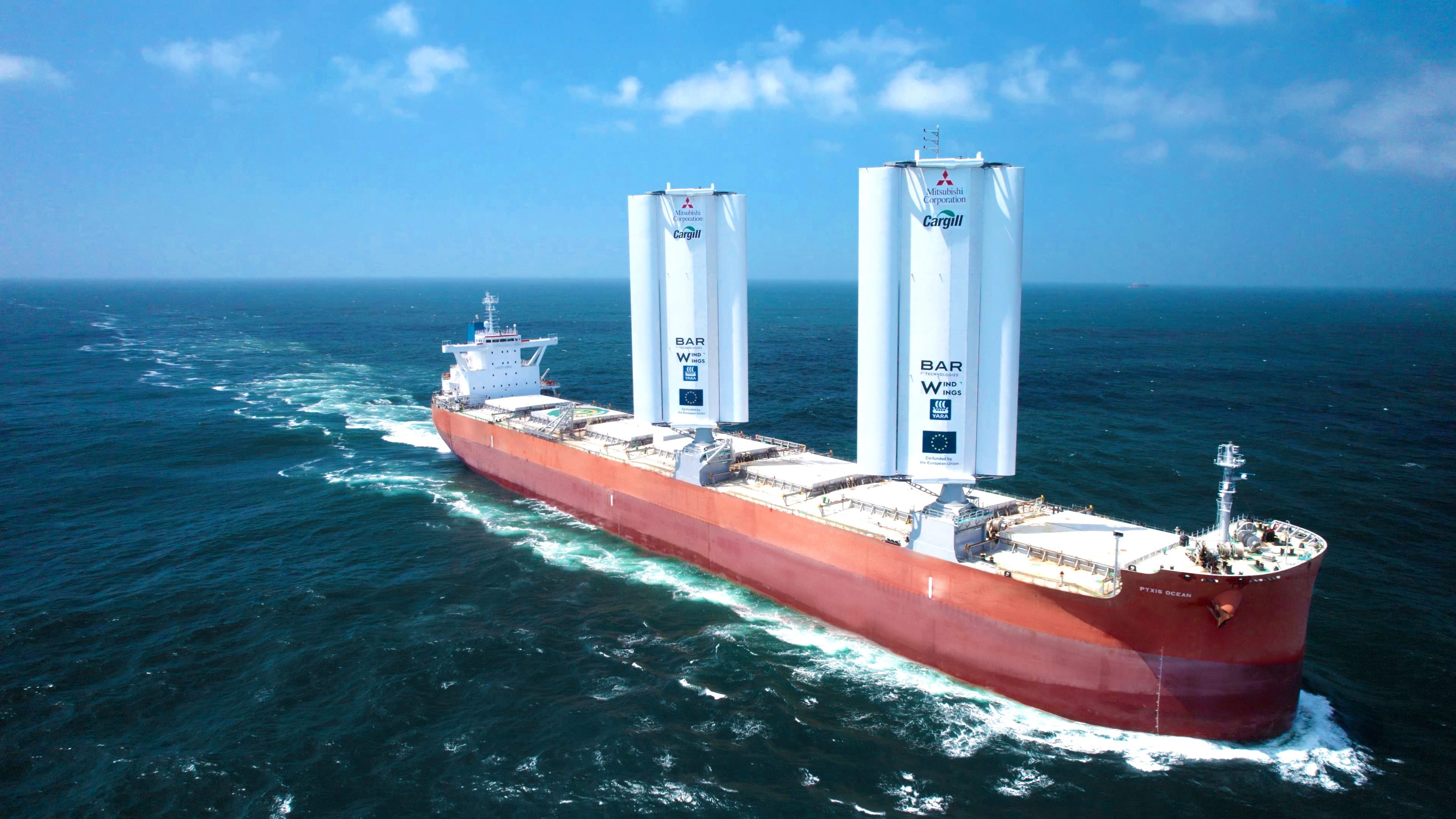Potential of wind assisted propulsion hindered by perception and funding challenges
Leadership Insights Newsletter story
This month, ICS Leadership Insights takes a look at the progress and roadblocks being faced by wind assisted propulsion systems in the maritime sector.

As the shipping industry grapples with the imperative to meet decarbonisation targets and adhere to new regulations such as EEXI, CII, and EU ETS, wind-assisted propulsion is gaining increasing attention as a potential solution. However, despite its promise, wind-assisted propulsion faces challenges stemming from industry perception and a shortage of mainstream funding, hindering its broader adoption.
Numerous wind-assisted propulsion solutions are under development, many incorporating automation and smart route optimisation features that hold the potential to enhance fuel efficiency, leading to reduced fuel consumption and greenhouse gas emissions. An important advantage of wind-assisted propulsion is its retrofit capability, and ease of operation that requires no additional crew workload or personnel onboard.
DNV’s latest Maritime Forecast for 2023 asserts that wind-assisted propulsion can serve as a valuable tool for the shipping industry to “overcome decarbonisation challenges” and achieve operational energy efficiencies. Notably, DNV said that wind-assisted propulsion systems have already been installed on 28 vessels, resulting in fuel savings ranging from 5-9% to date, and this figure could potentially reach 25% when retrofitted onto existing ships.
Wind-assisted propulsion technology is emerging from both within and outside the maritime industry, with unexpected entrants like tire manufacturing company Michelin introducing its novel inflatable solution WISAMO in 2021, of which trials have now begun.
Numerous trials of various solutions are underway. Yara Marine Technologies (YMT), for instance, has developed BARTech WindWings, and two of these are slated for installation on the Pyxis Ocean, a vessel chartered by Cargill. Speaking to ICS Leadership Insights, Thomas Koniordos, CEO of YMT, said: “With two BARTech WindWings installed onboard, the Pyxis Ocean is likely to experience approximately 3 tonnes of fuel savings per day on average — and consequent reduced emissions.”
According to YMT, this is an equivalent reduction of approximately 4.65 tonnes of CO2 emissions per wing per day for a vessel using HFO. Due to “a stark rise in demand”, Koniordos said YMT is currently producing four BARTech WindWings for the 210,000 DWT bulk carrier Berge Olympus and is negotiating additional contracts.
Di Gilpin, CEO of Smart Green Shipping (SGS), identifies key challenges confronting wind-assisted propulsion, including “lack of market confidence in the technology, claims regarding its fuel and GHG saving performance, and concerns about safety and operational impacts on ships.” To address these concerns, SGS is rigorously testing its FastRig technology, which will be unveiled at a land-based site in Scotland at Peel Ports’ Hunterston Parc in December 2023. Gilpin emphasises SGS’ focus on safety and performance efficiency, stressing the importance of real-world testing to validate laboratory performance predictions.
SGS is also collaborating with Nuclear Transport Solutions to assess the feasibility of installing the FastRig technology on the UK-flagged nuclear waste vessel Pacific Grebe. In 2024, it will also be fitted onto a UK-flagged commercial vessel, with full design approval secured beforehand.
Gavin Allwright, Secretary General of the International Windship Association (IWA), identifies the primary challenges facing wind-assisted propulsion as non-technological. He cites the “unlevel playing field in the marketplace” and a fuel-centric approach to decarbonisation policy as barriers to progress. Allwright notes that wind propulsion is often perceived as a “fuel-saving device” rather than a “propulsion power delivery system”, and its energy cannot be commoditized or traded, leading to undervaluation in the market.
Standardisation efforts are also underway, including the development of KPIs to measure wind propulsion energy, as well as work to establish uniform rules, regulations, assessment criteria, and sea-trial procedures.
Meanwhile, more demonstrator vessels will be required to measure the technologies emission benefits and allow shipowners to make informed investment decisions. “For primary wind, there is a higher CAPEX upfront in the building of vessels, but the key barrier is the commitment from cargo owners to issue longer term commitments to transport their goods on very low emissions vessels that use wind as their main source of power,” Allwright said.
While the industry works to further validate its technology, overcome funding hurdles, perception issues, and create standardisation, demand for wind-assisted propulsion appears to be on the rise. Allwright said members are scaling up production capacity to meet growing demands “and future fleet sized contracts” as opposed to individual contracts they have seen to date.


